Gluten free shopping and restaurant options abound in this brave new world of gluten free, but do you feel safer and more satisfied, or just more overwhelmed?
Unfortunately, in spite of the FDA’s gluten-free food labeling regulations, there are still plenty of pitfalls we gluten free consumers can fall into when shopping, eating out and trusting others with our food — our health. Below, I cover the risks with ordering from “gluten free” and “gluten friendly” menus (including so-called “gluten-free pizzas”) and I also go over the main problem areas to look out for when buying gluten free products.
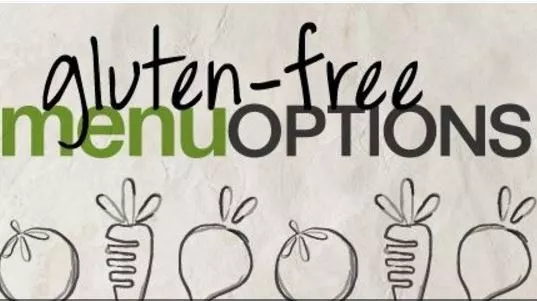
Ordering Gluten Free at Restaurants
“Gluten Free” but not for celiacs, or “Gluten Friendly” are two designations we’re seeing more of every day. Mom & Pop restaurants and large national chains alike, are searching for ways to both serve more consumers and protect themselves from liability, so they are getting more creative in their labeling and menu designations.
Most restaurants want to do right by their customers and none want to make anyone sick. However, when they start offering “Gluten Free” menus and “Gluten Friendly” menu options, many sink into the quagmire of semantics, confusing themselves and the consumer.
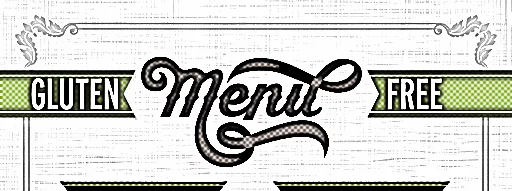
Gluten Free & Gluten Friendly Menus
The FDA regulations which came into effect in 2014 do not cover restaurants, meaning that restaurants are not bound by the same “less than 20ppm” standard in order to label their menus and foods “gluten free.” The FDA has issued guidance to the effect that restaurants choosing to use gluten-free labels should be consistent with the federal definition, but that’s as far as it goes.
This lack of oversight in gluten-free nomenclature has caused an array of problems in the restaurant world, allowing for all kinds of finessing of terms and descriptions largely designed to protect the restaurateur from liability. The result for gluten free consumers though, is that they truly have no idea what they’re getting on the safety spectrum. Is their meal gluten-free or not? Who’s to know?
The only way to find out is to do your research, ask the questions in advance and explain to restaurant management just how seriously you take your gluten free diet. The choice – and the risk – are ultimately up to you. For my Top 8 tips on eating out safely, hop to my article here.
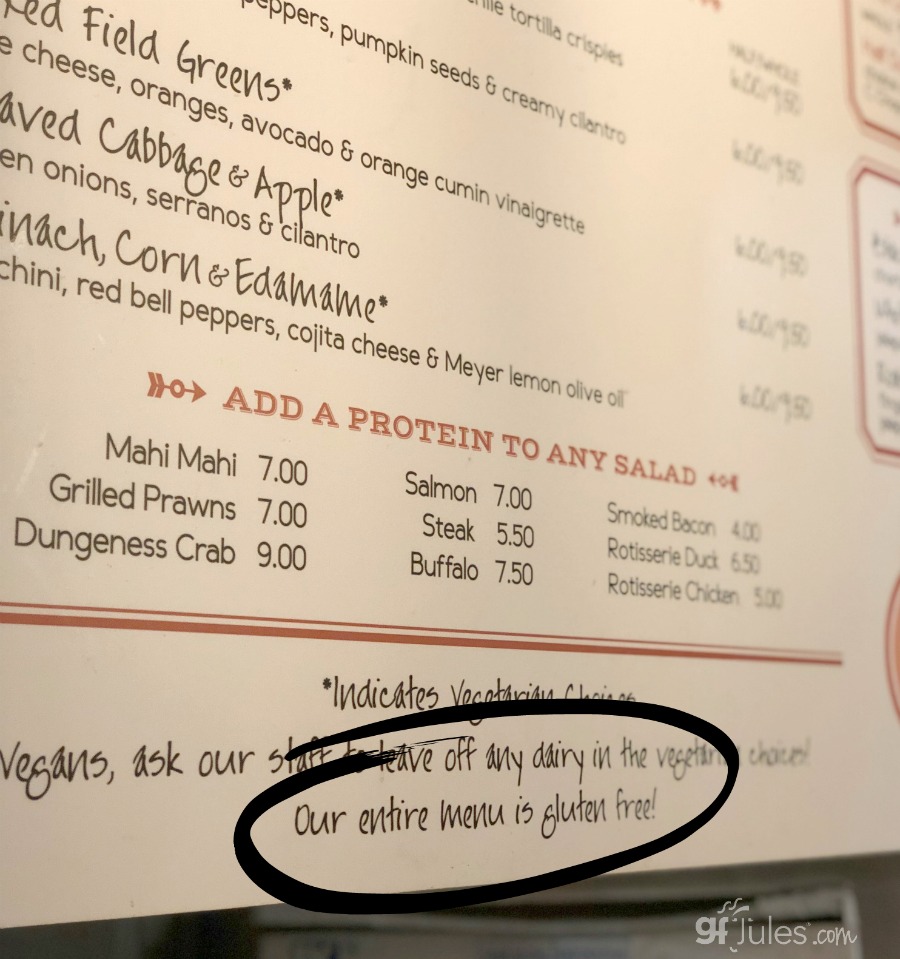
The best choice is to find a restaurant that is dedicated gluten free. Of course, these are few and far between, but when you find one, it is a jubilant moment indeed, for the questions have been asked already and the risks of gluten exposure have been reduced or eliminated altogether.
What’s much more likely is to encounter a restaurant serving both gluten and gluten-free dishes. How they choose to advertise these gluten-free menu items is where it gets dicey.
If a common kitchen is used where both gluten and gluten-free foods are made, there are lots of chances for cross-contact (when gluten food touches gluten free food) or cross-contamination (when gluten is added to gluten-free food).
Here’s a visual representation of what cross-contamination looks like: the black beans represent gluten free food and the 3 errant pinto beans represent gluten-containing food.
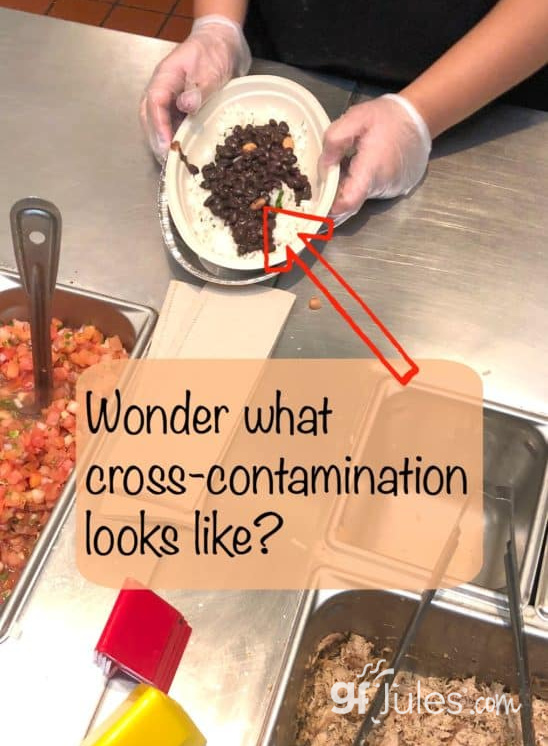
You can see on a food preparation line just how easy it is to co-mingle foods or for line cooks to drop crumbs or sauces into gluten free foods while reaching over for another ingredient. Cross contact would occur when this line cook uses the same utensils for both, or gluten free food touches gluten.
There are so many ways things can go wrong in this kind of setting. (And it happens at self-serve salad bars too!)
Many restaurants tell you up front that this could happen, although they still want your business. They advertise “gluten-friendly” or my personal favorite name, “gluten conscious” (what the heck?!) to lure you in, only to load you up with plenty of **caveats** about how you really shouldn’t eat there once you’re there.
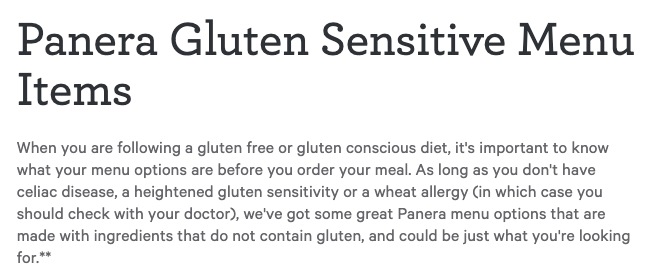
At this point, all you can do is turn around and leave, or ask lots and lots of questions of the management and decide for yourself if the item you’re choosing on the menu can be prepared in such a way that you feel you can escape without being glutened. Entirely a personal decision.
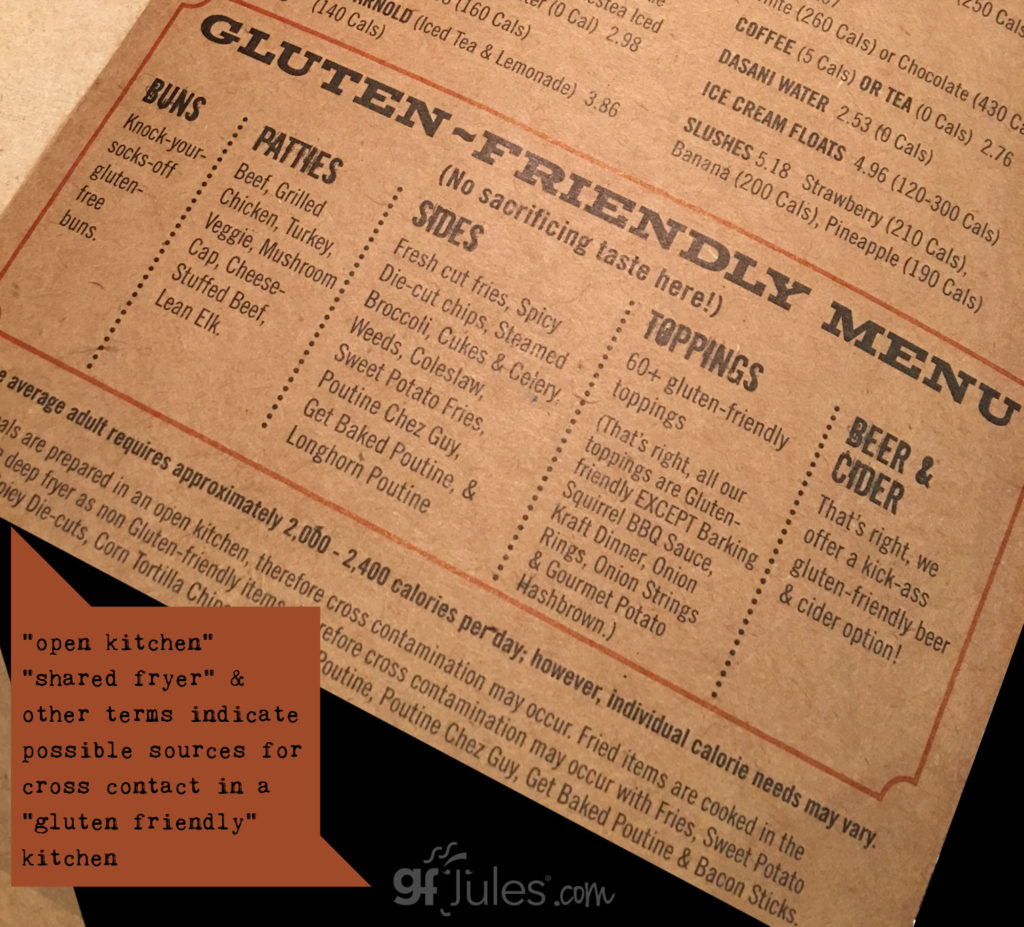
Even food labeling can be wrong, as in this example where otherwise gluten free salmon sushi rolls were placed in packaging with non-gluten free fake crab (which is almost always made with gluten).
You must read every label and look at every package. Every time.

How to Find Safe Gluten Free Restaurants
One way to identify safe(r) restaurants is to use apps like FindMeGlutenFree which allows users to rate restaurants after having eaten there, and identifies dedicated gluten free restaurants around the country. An even better app is the GlutenDude App which investigates and publishes only dedicated gluten-free and other restaurants which have been proven to use sounds methods to keep foods separate and safe.
A good rule of thumb: steer clear of fast food and restaurants with food prep areas containing a lot of gluten foods. Hop to my Top 8 Tips for Dining Out Safely, Gluten Free for more helpful tips and information.
How to Communicate with the Restaurant About Your Gluten Free Needs
Another method to help ensure your meal is prepared safely is to make your message very clear. Take these free restaurant cards with you next time you eat out, translated into English, German, French, Spanish and Chinese.
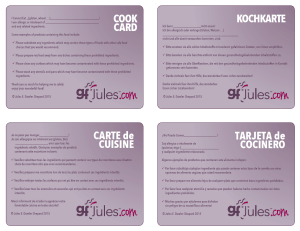
EqualEats is another site offering cards translated into multiple languages which describe your dietary restrictions for a chef. These wallet-size cards are sturdy like a credit card and handy to have with you for any dining situation.
If the staff understands the seriousness of your request, they should tell you that they cannot accommodate you with enough confidence to risk it, or that they can, and they will.
There are absolutely ways for even non-dedicated gluten free restaurants to serve you safely and deliciously, but they have to want to do it and be trained to do it properly. Here’s a restaurant review of one experience I had with just such a restaurant which did an exceptional job.
More and more restaurants are actually taking the proper steps to receive food allergy and gluten free staff training so that they can offer a safe dining experience for customers. These restaurants should be sought out, patronized and rewarded for their efforts to serve gluten free diners safely. Allertrain by Menutrinfo is one of the industry leaders in providing this training. Allertrain maintains a list of these trained restaurants on their site.
Without proper training, even experienced chefs can make mistakes and not fully understand what gluten is and where it’s found, so never blindly trust a gluten free menu. Can you spot the NON-gluten free food on this gluten free menu?
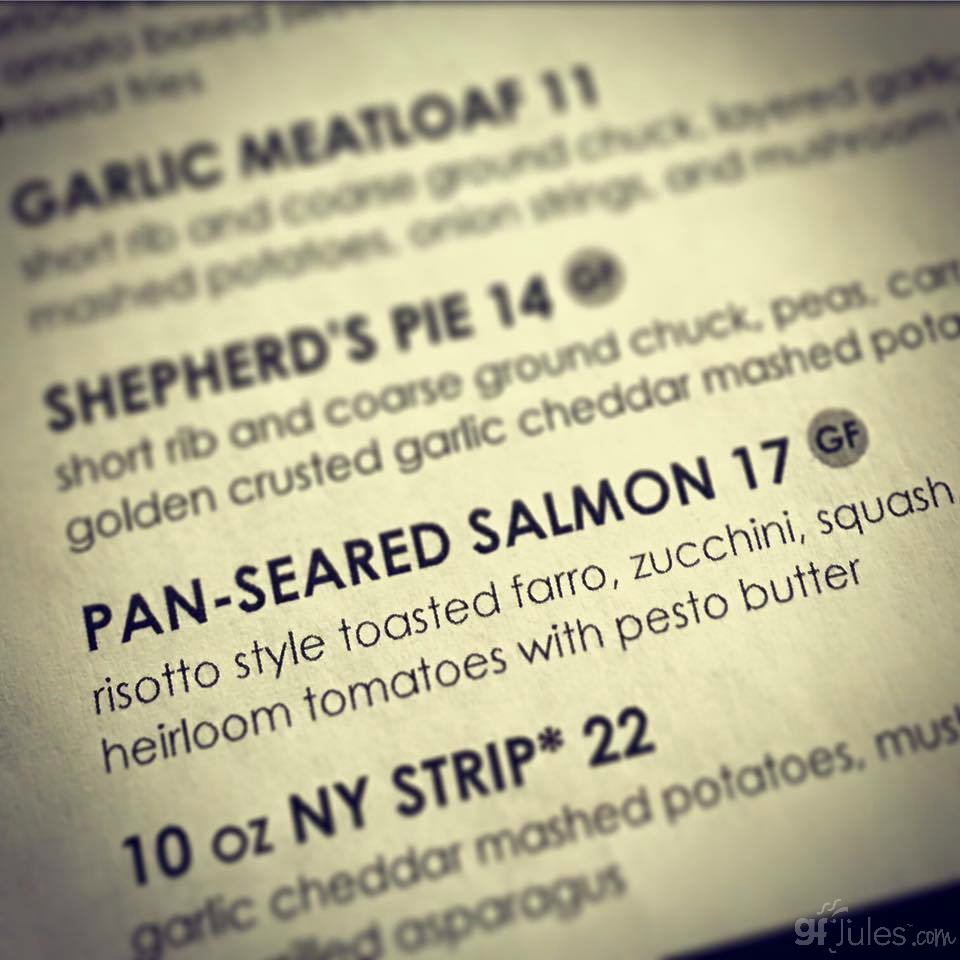
A Tale of Two (or more) “Gluten Free” Labeled Pizzas
It was the best of times, it was the worst of times. How could having more “gluten free” pizza options ever be a bad thing? Pull up a chair and allow me to explain.
In 2012, Domino’s Pizza decided to launch a gluten-free pizza in its retail chains. Domino’s touted the fact that that its “gluten-free” crusts are produced in a gluten-free facility and are regularly tested to meet the standard of less than 20ppm gluten, but this is before they arrive at each Domino’s chain location.
Because no efforts are made in the Domino’s kitchens to segregate the gluten-free pizzas from the gluten-containing pizzas — including using the same prep area, equipment, ingredients and utensils — these pizzas will be contaminated with gluten before they are delivered to the gluten-free customer. The only question is by how much.
After pressure from the gluten-free community, Domino’s changed its website (I added the circle & note; the graphic, including the typos, are directly from Domino’s):
Clearly, Domino’s “Gluten Free” pizza is not meant for those with celiac disease or serious gluten sensitivities, yet Domino’s still advertises what appears at first blush to actually be what it claims to be: a “Gluten Free Crust.”
Other Gluten-Free Pizza Chains with Pizzas Not for Celiacs
Other national pizza chains have followed suit, introducing “gluten free” pizzas since then, in largely the same way.
Papa Johns appears to be similarly lacking in procedures for handling their “gluten free” crusts separately and packages them in the same boxes as their regular crusts; it also does not recommend its gluten-free crust for celiac customers.
Chuck E. Cheese also offers a “gluten-free” pizza but notes their “Pizza is prepared in a shared kitchen and cannot be guaranteed completely free of gluten.”When they first released their GF pizza, it was indeed gluten free, served in its own sealed bag in which it was baked, and brought — still sealed — to the table with its own disposable pizza cutter. Not anymore! It’s unclear why this practice was since discontinued.
Uno Pizzaria & Grill offers a “gluten sensitive” menu with 3 pizza choices prepared with gluten-free designated utensils, though it cautions that some menu items are cooked on shared equipment so the risk of cross contamination remains.
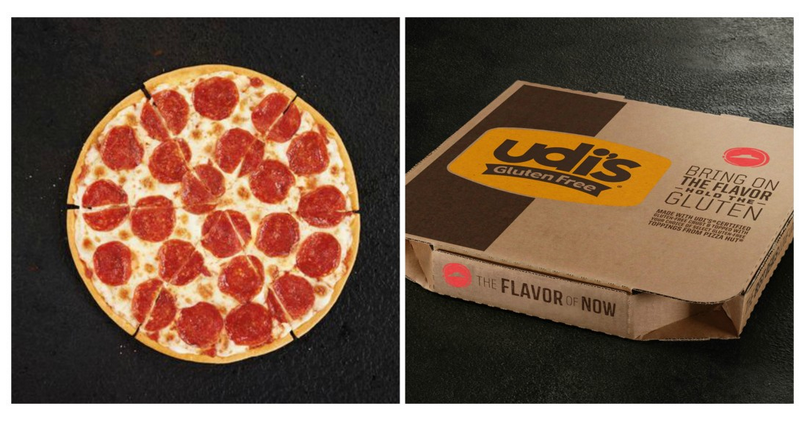
Pizza Hut offers a “Gluten Free” pizza in some of its retail outlets. Pizza Hut adds “toppings that do not contain gluten” to an Udi’s certified gluten-free crust in their restaurant kitchens where other regular pizzas are also made. They say that their pizzas are for “those simply looking to reduce gluten in their diets” and that they “do not recommend this pizza for customers with celiac disease.”
Note that even though the Pizza Hut “gluten free” pizzas are also prepared in a common kitchen used for regular gluten pizzas, they do take the very simple step to use a separate dedicated roller cutter to cut the gluten free pizzas in designated Udi’s Gluten Free Crust boxes in which the pizzas will be delivered.
As you can see, these pizzas are all prepared in pizza kitchens that are not free of gluten, but are prepared in different ways. They are also still described as being “Gluten Free,” yet when you ask more questions, you learn that none of them are recommended for anyone who must eat gluten free. Without digging deeper though, it would be easy to see how a consumer could take the “gluten free” designation at face value and be made sick.
Shopping for Gluten Free Products is Tricky, Too …
Shopping for gluten free products at grocery stores comes with its own set of landmines. While it may seem like a dream come true to walk into your local grocery store and see a dedicated gluten free section, it’s like a gluten free menu — you can’t trust it without looking further.

There are really so many ways this system could go wrong. Take a good look at the photo above. A “Gluten Free” sign indicates that this section is gluten-free, right? But not so fast.
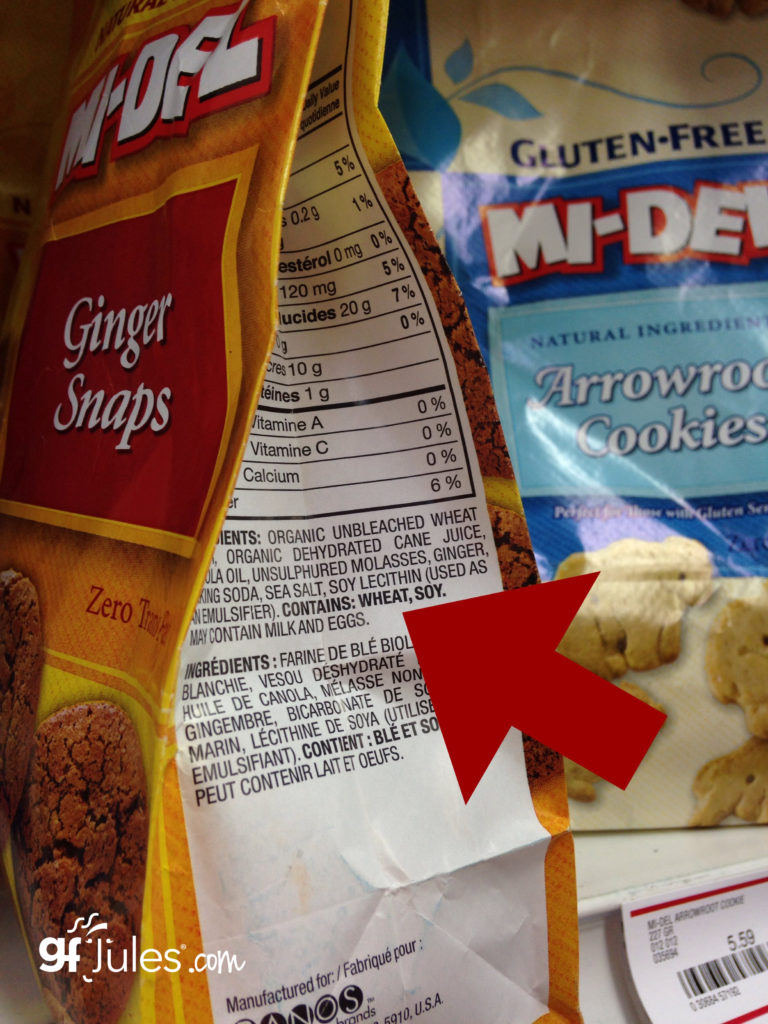
Items that have been hand-picked and organized for your shopping ease and pleasure ought to make your life easier, but in many cases, they are erroneously shelved. The reality is that grocery buyers and those who stock the shelves have a whole store to manage, stock, arrange and organize.
As in this case, they may take a brand that has some gluten free products and put the entire brand’s line in the “Gluten Free” section, even though some of those products are absolutely not gluten-free (like Mi-Del).
Or they may rely on the fact that the manufacturer hasn’t changed its formula. Or mistakenly place products they believe to be gluten free in the section, even though they are in error.
They also may forget to move the Gluten Free sign away from these products.

Even sections that seem like they should be full of naturally gluten free options are often peppered with not-so-gluten-free choices. Never assume that every product in a given section (like the rice section) is gluten free. There are lots of seasonings and thickeners which contain gluten, and can turn up in otherwise gluten free foods like rice.
Read every label for yourself. Every time.
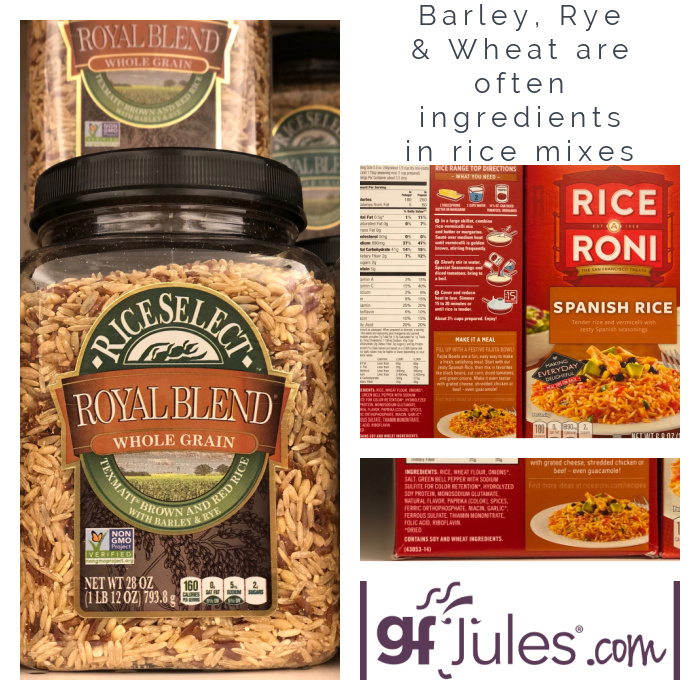
And if you’re unsure of an ingredient, don’t buy it.
Take farro, for example. It’s found among the rice choices in many grocery stores and it looks rice-like enough … but it’s actually in the wheat family — NOT gluten free!
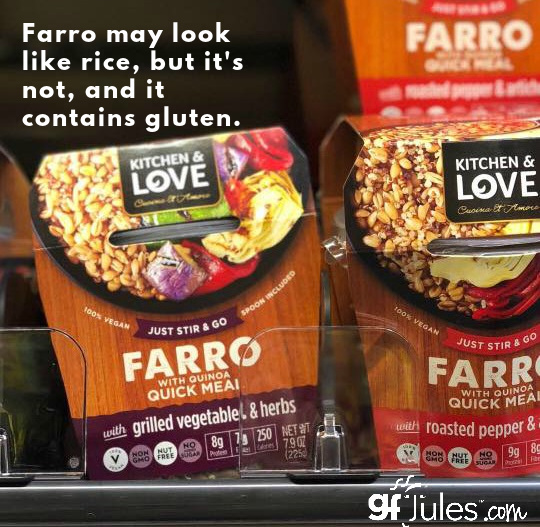
For a list of gluten-containing grains, go here.
Further complicating matters, many manufacturers which make both gluten-free and gluten-full products use very similar packaging, only adding to the potential for confusion for grocery store clerks and for customers.
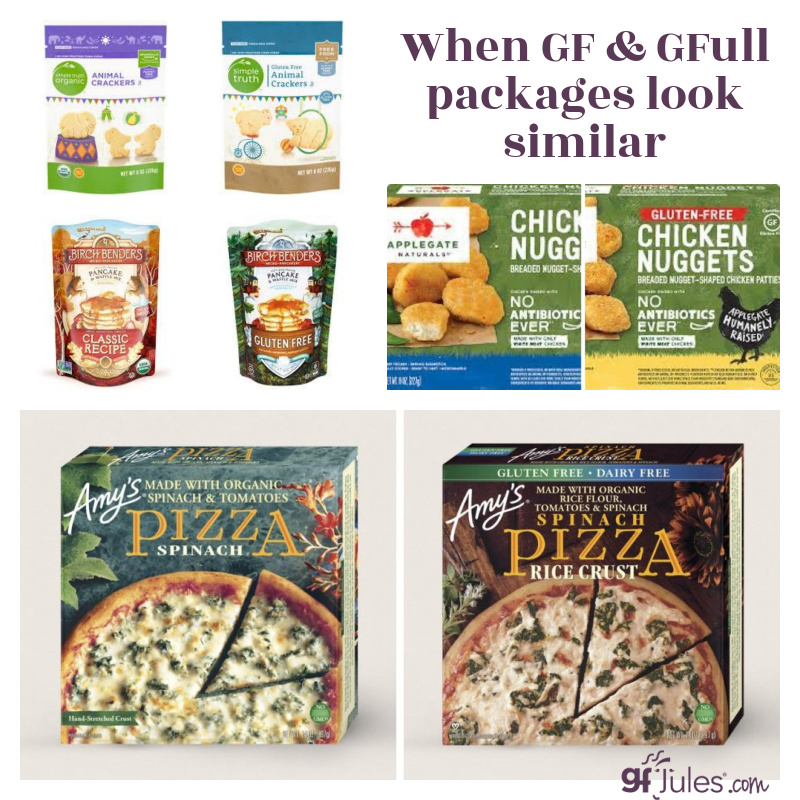
The best way to be certain that you’re choosing the safest gluten free foods is to buy those certified by an independent, third party certifier. To read more about this process and see what a certification looks like (as well as confusing symbols that do not actually indicate certification), hop to my article on Shopping for Safe Gluten Free Products.
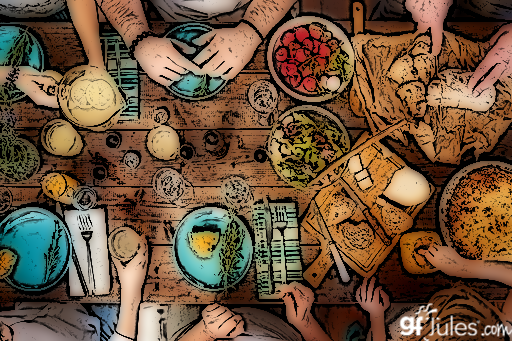
Eating Gluten Free with Friends & Family
As confusing and confounding as all these situations are for us, as gluten free consumers, imagine how difficult this world would be to navigate if you only dabbled in gluten free because of a friend or family member. How would you find products you were certain were gluten free and safe?
You would most likely simply rely on the manufacturers, stores or so-called gluten free restaurants to tell you. The nuances and serious danger of cross-contact would likely be lost on someone who doesn’t live this life day in and day out.
So your well-meaning aunt makes a boxed brownie mix for you that she says she bought in the GF section. Do you eat it? (remember that mixed up grocery store section I showed you in the photo above???)
At a birthday party for one of your daughter’s friends, the mother assures you that she purchased a gluten free pizza for your daughter so she will be able to eat like the other kids. Do you let her eat the pizza?
These are the difficult questions we have to ask ourselves every day. Which is why it’s sometimes not better to have so many choices and opportunities for mistakes.
Bottom line: buyer beware. Oh, and read those labels!
(And the good news is that gluten-free products are getting better and better! I’ve always taken pride in the fact that folks can’t tell my recipes and products are gluten free, and now we gluten-free consumers have even more, better choices in all product categories! This BuzzFeed Blue video shows it is getting harder to tell gluten-free foods apart from their gluten counterparts.)


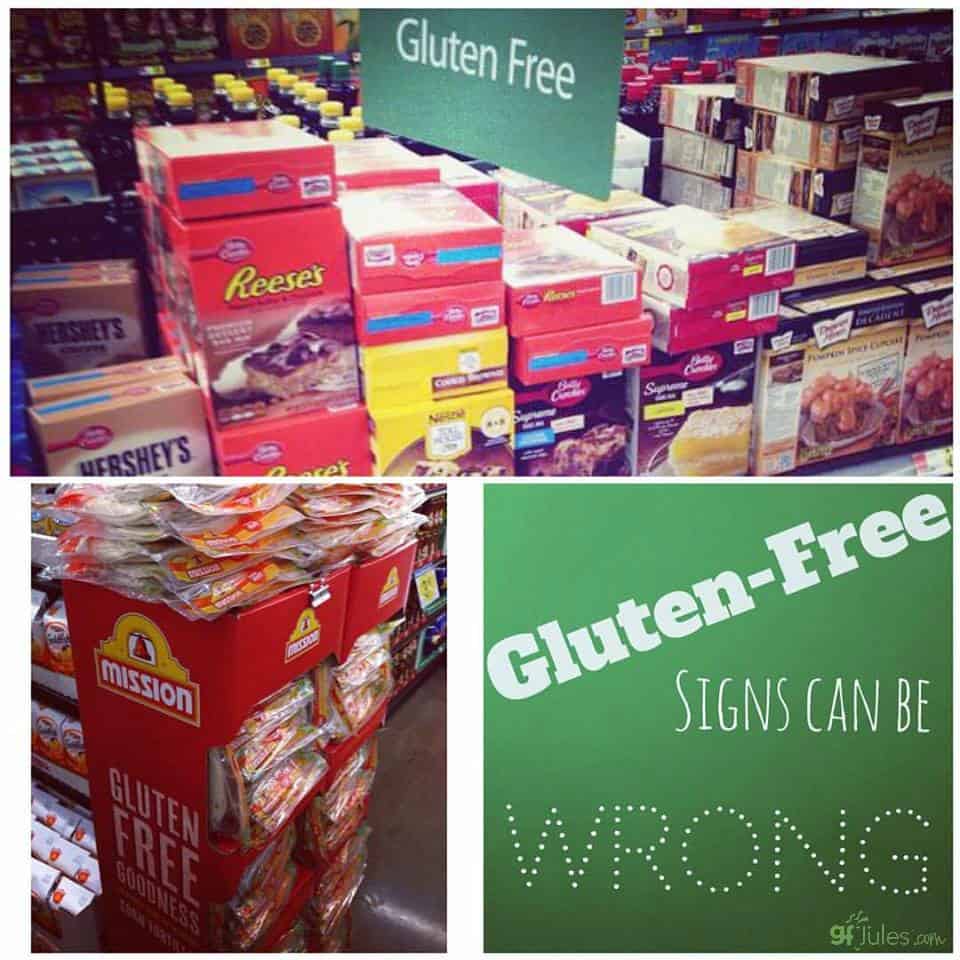


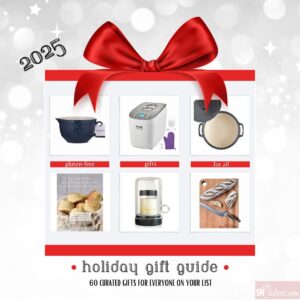
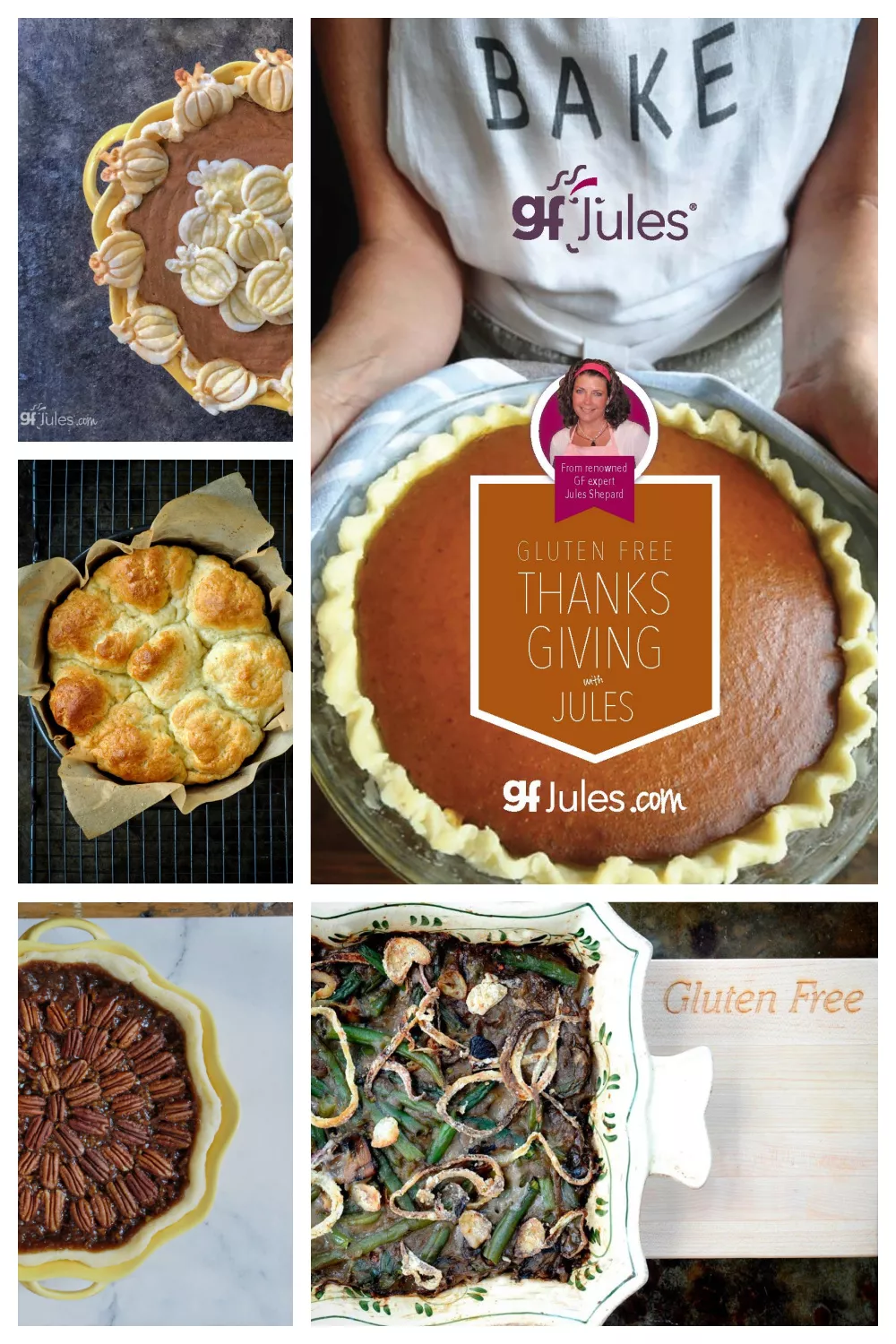



















The Amy’s pizzas! I got complacent after 20 years gluten free, thought I was in a gluten free section of a grocery store on vacation, and ended up in the hospital! The funny part (not at the time) was I kept saying how good the crust was!
Those Amy’s products are dangerous — they are labeled so similarly between gluten free and gluten full. I really hate when companies don’t distinguish well between their products. I’m so sorry to hear the results of that similar packaging on you! I hope you’re feeling better now. I know you won’t make the same mistake again, but thank you for taking the time to share what happened to you here, in hopes that other readers will learn from your devastating mistake!
~jules